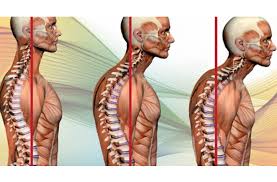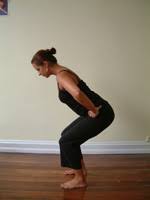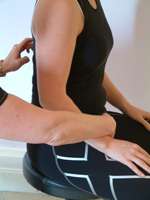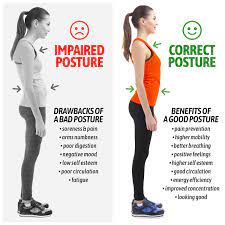

Neck humps, often called “dowager’s humps” or “buffalo humps,” are not just a cosmetic concern—they can also lead to pain, restricted mobility, and even impact your self-esteem.
But what if I told you that you could start correcting that pesky neck hump with a little education and some simple changes to your daily habits?
That’s right!
Understanding and improving your posture is one of the most effective ways to fix a neck hump and prevent it from getting worse.
Let us break down how posture education can help you achieve a straighter, healthier neck.
“How to Correct Neck Hump with Posture Education” Article Index:
- Understanding the Causes of a Neck Hump
- The Role of Posture in Developing a Neck Hump
- How Posture Education Can Correct a Neck Hump
- Key Exercises for Neck Hump Correction
- Daily Habits to Support a Healthy Neck Posture
- Conclusion: Is Posture Education the Solution?
Understanding the Causes of a Neck Hump
A neck hump, medically known as kyphosis, can be caused by several factors including poor posture, osteoporosis, tension headaches or even obesity.
This condition is characterized by an exaggerated forward curve of the upper spine, often leading to a noticeable hump at the back of the neck.
One of the most common forms of this condition is the dowager’s hump, typically seen in older adults but increasingly prevalent among younger individuals due to poor postural habits.
The Role of Posture in Developing a Neck Hump
Posture plays a significant role in the development of a neck hump.
Prolonged periods of slouching, hunching over screens, or even poor sleeping positions can gradually lead to a weakening of the muscles that support the spine.
This leads to an imbalance where the neck is pushed forward, causing the vertebrae to protrude and form a hump.
This is often referred to as a buffalo hump.
Correcting a dowager’s hump through posture education involves understanding how these daily habits contribute to poor alignment and how to make adjustments that can alleviate pressure on the spine and neck muscles.
How Posture Education Can Correct a Neck Hump
Posture education is not just about sitting up straight; it is about understanding how your body moves and how to maintain a balanced alignment.
This can significantly help fix a neck hump by:
- Reeducating Muscle Memory: By consciously maintaining proper posture throughout the day, you can reprogram your muscle memory to support a more natural spinal alignment. This reduces the forward head posture that contributes to neck humps.
- Improving Awareness: Posture education helps individuals become more aware of their body positions and the strain they place on their neck and back. This awareness is crucial for making the small adjustments needed to prevent further deterioration.
- Strengthening Exercises: Part of posture education includes exercises that strengthen the muscles of the upper back and neck. These exercises (for example shrugs) not only help in fixing a neck hump but also prevent it from returning.
Key Exercises for Neck Hump Correction
Incorporating specific exercises into your routine can significantly aid in neck hunch correction.
Here are some effective exercises for dowager’s hump correction:
- Chin Tucks: This exercise helps to strengthen the muscles at the front of your neck, pulling your head back into alignment.
- Sit or stand up straight and pull your chin back as if you’re trying to make a double chin.
- Hold for 5-10 seconds and repeat 10 times.
- Wall Angels: Great for opening up the chest and strengthening the upper back muscles.
- Stand with your back against a wall and slowly raise and lower your arms, keeping your elbows and hands in contact with the wall.
- Repeat for 10-15 reps.
- Cat-Cow Stretch: This yoga-inspired exercise increases flexibility in the spine.
- Start on all fours, alternate between arching your back (cow position) and rounding it (cat position).
- Perform 10-15 repetitions.
- Thoracic Extensions: This exercise can help in the buffalo hump correction by targeting the middle and upper back.
- Sit on a chair and place your hands behind your head. Lean back over the top of the chair, extending your thoracic spine.
- Hold for a few seconds and repeat 5-10 times.
Daily Habits to Support a Healthy Neck Posture
Apart from exercises, changing certain daily habits can also support neck hunch correction:
- Ergonomic Workspaces: Make sure your computer screen is at eye level and that you’re not looking down at your phone or laptop for extended periods. This can help prevent the forward head posture that contributes to a neck hump.
- Mindful Sitting and Standing: Regularly check in with your posture throughout the day. When sitting, your back should be straight, and your shoulders should be relaxed and down. When standing, distribute your weight evenly on both feet.
- Regular Breaks: Avoid sitting for long periods. Stand up, stretch, and move around every 30 minutes to prevent stiffness and encourage good posture.
- Proper Sleep Positioning: Sleeping with a supportive pillow that keeps your neck in a neutral position can help to fix the hump on the back of your neck. Avoid high pillows that push your head forward.
Final Analysis: Is Posture Education the Solution?
So, can posture education really correct a neck hump?
Absolutely!
While exercises and physical therapy play a crucial role, the foundation of any effective treatment plan is understanding how to maintain proper posture throughout the day.
By learning to move and position your body correctly, you can not only fix a neck hump but also prevent its recurrence. Incorporating posture education into your daily routine can lead to long-term improvements in your spinal health and overall well-being.
Correcting a neck hump is not about drastic measures or immediate results—it is about making consistent, mindful changes to your habits and lifestyle.
With the right education and commitment, you can achieve a healthier, more aligned posture.
References:


